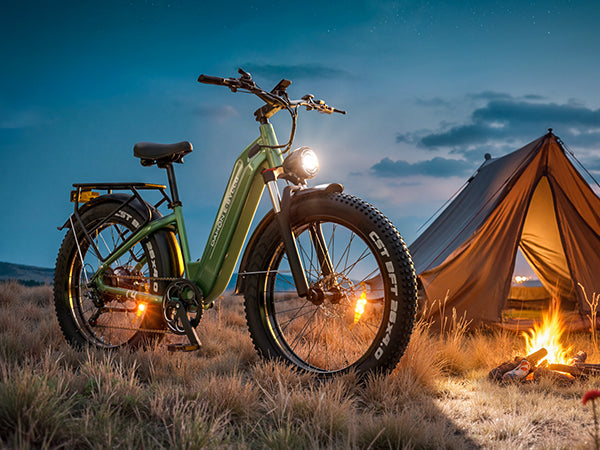If you're looking to ride longer distances or tackle steeper hills on your electric bike, you may have wondered: Can I add a second battery to my electric bike? The short answer is yes, in many cases you can—but it's not always straightforward. In this article, we'll explore the benefits, considerations, and steps involved in adding a second battery to your e-bike.

Why Add a Second Battery?
1. Extended Range
The most common reason riders add a second battery is to double or significantly increase their range. If your current e-bike battery gives you 50-90 miles per charge, a second battery could stretch that range to 100 miles or more, depending on usage and terrain.
2. Power Backup
Having a second battery on hand can serve as a backup power source. For long-distance travelers or commuters, this provides peace of mind—especially when riding in remote areas or over long routes with no charging stations.
3. Better Load Distribution
With two batteries, you may be able to optimize the placement of weight on your e-bike for improved balance, especially useful on cargo bikes or electric mountain bikes.
Can Any E-Bike Support a Second Battery?
Not all electric bikes are designed to handle a second battery. Before you start, consider the following:
1. Controller Compatibility
Your e-bike’s controller manages power delivery to the motor. Some controllers can handle input from two batteries; others cannot. You may need a dual battery controller or a battery switch/combiner if your current controller doesn’t support it.
2. Voltage Matching
The second battery must match the voltage of the original battery. For example, if your current battery is 48V, the second battery should also be 48V. Mixing voltages can damage the controller or motor.
3. Physical Space
Where will you mount the second battery? Popular locations include:
-
Rear rack
-
Kettle rack
-
Attached to a trailer or pannier system

Make sure your frame and accessories can safely support the additional battery weight.
Wiring and Installation Options
There are two common ways to integrate a second battery into your e-bike setup:
Option 1: Parallel Wiring
This involves connecting both batteries to the controller simultaneously using a battery combiner or parallel connector. Benefits include:
-
Simultaneous discharge
-
Seamless transition between batteries
However, this method requires identical battery specs and good technical knowledge to avoid overloading the system. If you are not a professional, please do not use this method or add a second battery without authorization. Please remember safety first at all times.
Option 2: Manual Switching
This simpler method uses a switch or connector to manually change between batteries. Only one battery powers the bike at a time. It’s a safer and easier option for DIY upgrades but requires you to stop and switch when one battery runs out.
Pros and Cons of Adding a Second Battery
| Pros | Cons |
|---|---|
| 🚴♂️ Increased range | 💰 Extra cost |
| 🔋 Backup power supply | ⚖️ Added weight |
| 🏞️ Ideal for long rides | 🧰 Requires installation tools |
| 🚚 Balanced load for cargo bikes | 🧠 Technical compatibility needed |
Tips for a Successful Dual-Battery Setup
-
Use identical battery types (voltage, capacity, brand if possible) to ensure compatibility and balance.
-
Invest in a good battery mount or case to protect the second battery from shock and weather.
-
Ensure your charger setup can handle both batteries—some people carry two chargers or use a dual charging station.
-
Monitor battery health and balance to avoid discharging one faster than the other.
When Not to Add a Second Battery
If your daily rides are short, or your e-bike already gives you enough range, adding a second battery may not be necessary. Also, if your bike’s frame or controller isn't compatible, forcing a dual-battery system can do more harm than good. In such cases, upgrading to a larger capacity battery or choosing an e-bike with longer range may be a better choice.
Final Thoughts
Adding a second battery to your electric bike is a great way to extend your riding range and enhance performance, especially for commuters, adventurers, or delivery riders. Just make sure to check compatibility, safety, and installation requirements before making the upgrade.
If you're unsure whether your e-bike can support a second battery, it's best to consult with the manufacturer or a local e-bike technician.
⚠️SPECIAL REMINDER:
Some EBYCCO bicycle owners have successfully added a second battery to their bicycles, and most of them will install the second battery on the bottle cage. Although adding a second battery can make your range longer, private modification will damage the original line of the bicycle, which may affect the warranty of the bicycle. Therefore, please consider carefully before modification. We also have many customers who buy spare batteries and put them in the cycling bag. When the first battery runs out of power, they will replace the spare battery. This is also a relatively feasible way to extend the mileage.

